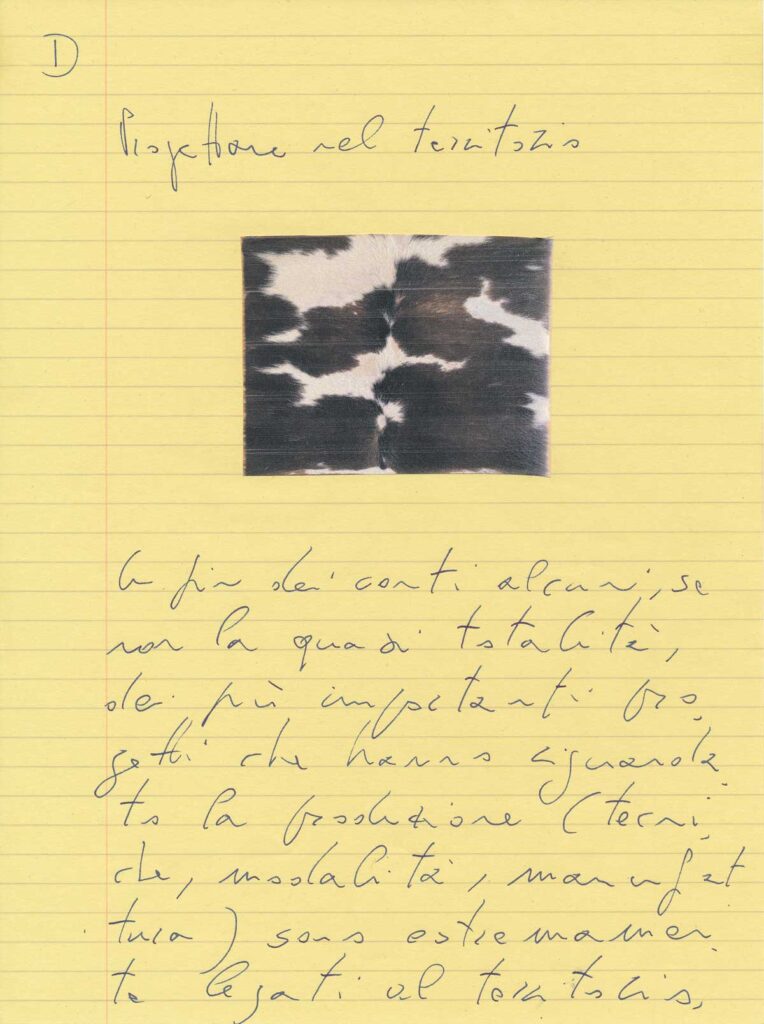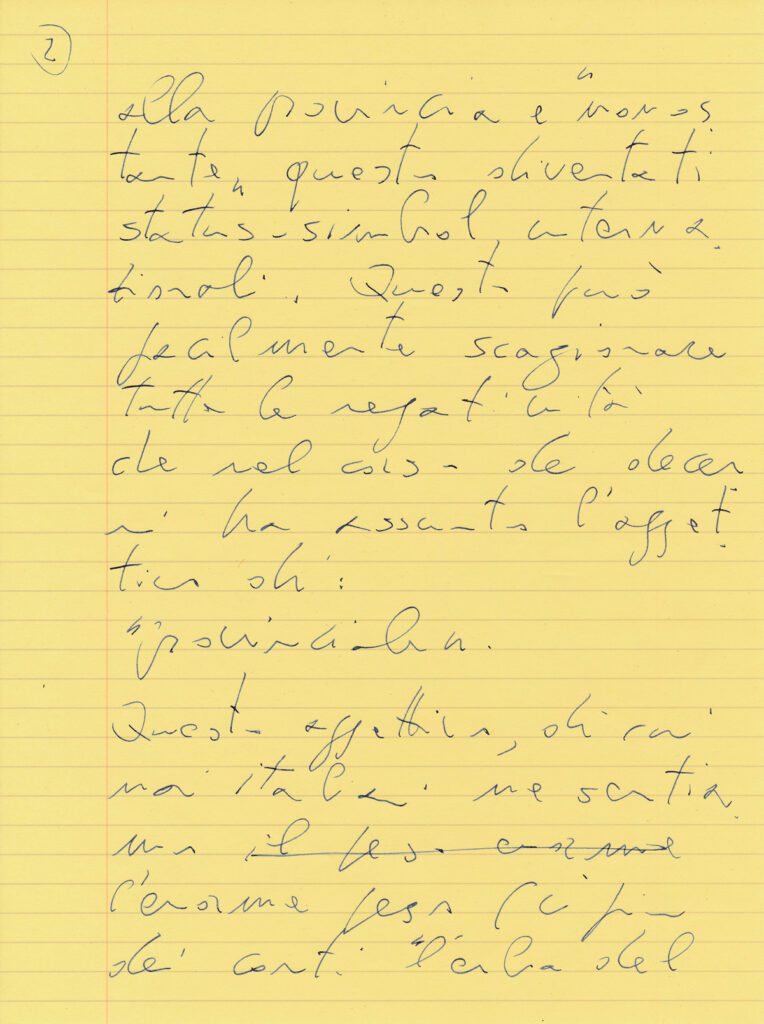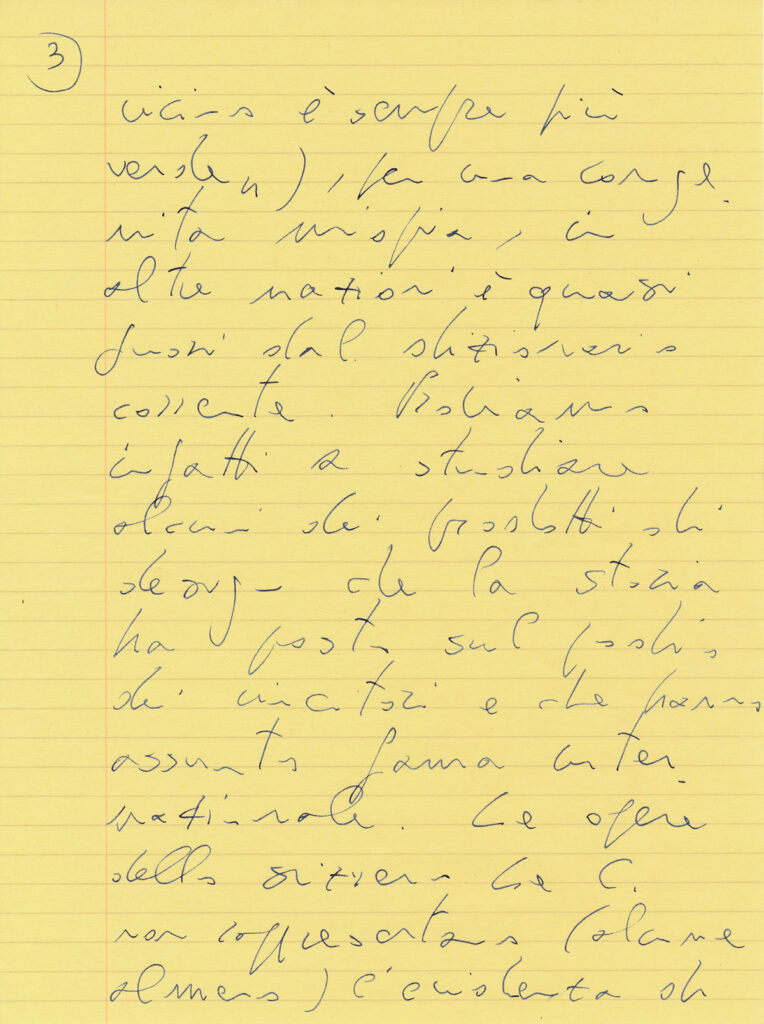LII
Zürich 2020
r.
In fin dei conti la maggioranza dei più importanti progetti che hanno riguardato la produzione (tecniche, modalità, manifattura) sono estremamente legati al territorio, alla provincia e nonostante questo diventati status-symbol internazionali.
Questo può facilmente scagionare tutte le negatività che nel corso dei decenni ha assunto l’aggettivo di “provinciale”.
Questo aggettivo, di cui noi italiani ne sentiamo l’enorme peso, Comune per Comune, per la congenita miopia che ”erba del vicino è sempre più verde”, in altre nazioni è quasi fuori dal dizionario o almeno dall’uso corrente.
Proviamo infatti a studiare alcuni dei prodotti di design che la storia ha posto sul podio di vincitori e che hanno assunto fama internazionale.
Le opere dell’architetto svizzero Le Corbusier non rappresentano l’evidenza di questo?
Nella fotografia in prima pagina ho messo il dettaglio della seduta di una LC1 prodotta oggi da Cassina di cui ne possiedo due esemplari degli anni ’60.
L’utilizzo della pelle con pelo pezzato non ci ricorda forse i pascoli che facilmente osserviamo viaggiando in auto lungo le strade della confederazione elvetica? Non ci riporta prontamente all’attività più storica di tutta la Svizzera ovvero quella agraria? Non è questo prodotto facilmente inscrivibile nel “tipico”, quasi nel “caratteristico svizzero”?
Eppure oggi è un prodotto internazionale, uno status symbol che ha varcato i continenti.
Scrivo questo per dire che alla fine non è mai necessario trovare forme gratuitamente stravaganti per essere innovativi ma solo utilizzando quello che abbiamo intorno, con tecnologie magari nuove, la mano d’opera di chi da secoli lavora materiali specifici (legno, alluminio, pelle, tappezzeria etc.) per creare qualcosa di regional-internazionale.
Almeno che qualcuno non creda che il futuro sarà il privarci di tutta la nostra storia, dei paesaggi che ci circondano, dei boschi che costeggiano le nostre città, degli animale che ne abitano le colline, delle tavole apparecchiate, dell’amore per la casa ed il confort dell’abitare:
molto difficile da sostenere.




The province’s project
After all, the majority of the most important projects that have concerned production (techniques, methods, manufacturing) are extremely linked to the territory, the province and despite this have become international status symbols. This can easily exonerate all the negativity that over the decades has assumed the adjective “provincial”.
This adjective, of which we Italians feel the enormous weight, City by City, for the congenital short-sightedness that “the grass of the neighbour is always greener”, in other countries it is almost out of the dictionary or at least out of current use.
In fact, let’s try to study some of the design products that history has placed on the podium of winners and that have taken international form.
Don’t the works of Swiss architect Le Corbusier represent evidence of this?
In the photograph on the front page I put the detail of the seat of an LC1 produced today by Cassina, of which I have two examples from the 1960s.
Doesn’t the use of pebbled leather remind us of the pastures we easily drive along the roads of the Swiss confederation? Doesn’t it promptly bring us back to the most historic activity of all in Switzerland, namely agriculture? Isn’t this product easily inscribed in the “typical”, almost “characteristic Swiss”?
And yet today it is an international product, a status that has crossed continents.
I am writing this to say that in the end it is never necessary to find gratuitously extravagant shapes to be innovative but only to use what we have around us, with perhaps new technologies, the labour of those who have been working for centuries on specific materials (wood, aluminium, leather, upholstery etc.) to create something regional-international.
Unless someone believes that the future will be to deprive us of all our history, of the landscapes that surround us, of the woods that border our cities, of the animals that live on the hills, of the laid tables, of the love for home and the comfort of living:
very difficult to sustain.